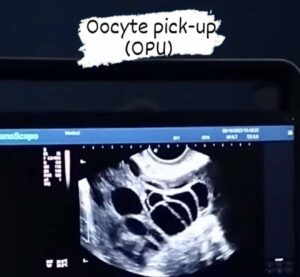
Stages of In Vitro Fertilization (IVF)
What Should the Patient Know When Starting the IVF Program for the First Time? What is the IVF process, how long does it take, and how difficult is it?
These are the three most frequently asked questions from new patients.
Let’s explain step by step what the patient goes through:
Stimulation — This is the first stage.
Our goal is to obtain as many eggs as possible.
In a natural cycle, only one follicle develops, and thus — only one egg. That’s not enough for us. That’s why we stimulate the ovaries using special medications.
These medications are administered using a small insulin needle into the abdominal area.
The patient does this herself, at home. The process is neither painful nor difficult.
Stimulation usually lasts around 10–12 days.
During this time, you’ll have 2–3 ultrasound appointments — we monitor how the follicles are growing. Based on their size, we schedule the egg retrieval day.
Egg Retrieval (Puncture) — This is the procedure for collecting the eggs.
It takes around 10–15 minutes and is performed under short general anesthesia — you’re asleep during the process.
About 1.5 hours after the procedure, you can return to your normal routine.
That same day, your partner provides a sperm sample, and fertilization begins in the lab.
The embryos grow for 5–7 days.
Cycle Segmentation and Genetic Testing
In most cases, we perform cycle segmentation — meaning the embryo transfer happens later, allowing us to do genetic testing in advance.
For genetic testing, we remove 3 to 8 cells from the embryo’s outer layer on Day 5.
These cells are sent for genetic analysis.
Meanwhile, the embryo is frozen and stored in the lab, awaiting evaluation.
If the embryo is found to be genetically healthy, we begin preparing for embryo transfer.
The transfer can happen in any subsequent month — at your convenience, since the material is already frozen.
Transfer preparation can take place:
- During a natural cycle, or
- With hormonal support This is decided together with your doctor.
Preparing for embryo transfer takes about 18–20 days.
Embryo Transfer — A very simple and painless procedure, similar to a Pap smear.
It takes only 3–5 minutes.
After the transfer, you can return to your regular routine.
10 days later, you’ll take a blood test for beta-HCG (human chorionic gonadotropin).
If the test is positive, we confirm the result with an ultrasound and register the pregnancy with your OB-GYN.
The Key Message:
The process is simple and doesn’t take much time.
What matters most to us is the outcome — your pregnancy!
Wishing you a smooth protocol, effective treatment, and most importantly — a happy and healthy pregnancy!
Leave a reply

Leave a reply